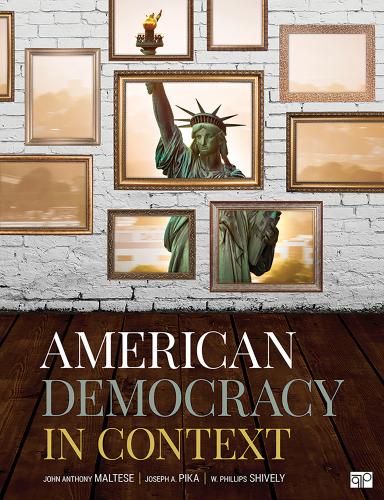The details are as follows.
Three dollars.
State of Rhode Island and Providence Plantations.
Number 2298. Three dollars.
The possessor of this bill shall be paid three Spanish milled dollars by the thirty-fifth day of December, one thousand seven hundred and eight-six, with interest in like money, at the rate of five per centum per annum, by the state of Rhode Island and Providence Plantations, according to an act of the legislature of the said state, of the second day of July, 1780.
Annual interest: 0 s; 10 d; 3 q
Monthly interest: 0 s; 0 d; 3 ½ q
A signature on the right bottom.
Back to Figure
The details are as follows.
Bicameral legislatureHouse 1: Representatives elected directly by people, with proportional voting powerHouse 2: Representatives selected by state legislatures, with proportional voting power
Executive Branch: unspecified size to enforce the law
Judicial Branch: one or more supreme tribunals plus inferior courts, with judges appointed for life by the legislature
Bicameral legislature, Judicial branch, and Executive branch are connected in a circle.
Lines from Judicial Branch and Executive branch join to lead to: Council of revision—consisting of members of the executive and judicial branches to review every act of the legislature before it shall become law.
Back to Figure
The three branches are connected in a circle. The details are as follows.
Unicameral Legislature: Representatives selected by state legislature, with each state having one vote
Executive Branch: Multiple executive officers with limited power rather than a single president
Supreme Court: One supreme tribunal, with judges appointed for life by the executive branch
Back to Figure
The details of slaves as a percentage of state population are as follows.
0% to 4.9%:New Hampshire: 0.7%Massachusetts: 1.3%Pennsylvania: 2.3%Connecticut: 2.5%
5.0 to 9.9%:Rhode Island: 5.8%New York and New Jersey: 7.6%
10.0 to 29.9%:Maryland: 21.3%Delaware: 22.0%North Carolina: 26.9%
30.0 to 39.9%:Georgia: 36.1%
Equal to or more than 40%:Virginia: 40.9%South Carolina: 43.8%
Back to Figure
The diagram shows labelled arrows connecting the three branches of the government.
The arrows indicate the direction of a check that one branch exerts over the other.
The details are as follows.
Executive branch:Arrow to Legislative branch:Authority to call special sessions of CongressPower to wage warPower to veto billsArrow to Judicial branch:Power to grant reprieves and pardonsNominate judges to fill vacancies in the courts
Judicial branch:Arrow to Executive branch:Power to interpret laws and executive actionsPower of judicial reviewJudges have life tenureChief justice presides over impeachment trial of presidentArrow to Legislative branch:Power to interpret lawsPower of judicial review
Legislative branch:Arrow to Executive branch:Power to confirm or reject nominations submitted by the presidentPower to impeachPower to override presidential vetoesControl appropriationsPower to ratify or reject treatiesPower to declare warArrow to Judicial branch:Power to create lower courts and determine their jurisdictionsPower to impeachPower to alter the Supreme Court’s appellate jurisdiction
Back to Figure
The horizontal axis shows the percent of respondents who have “quite a lot” or a “great deal” of confidence in government and American institutions.
The details are as follows.
The military: 73%
Small business: 68%
The church or organized religion: 36%
The presidency: 38%
The U.S. Supreme Court: 38%
Congress: 11%
Note: The framers thought that Congress would be the most important governmental institution. How do people feel about it today, based on the findings shown here?
Back to Figure
The horizontal axis shows the views and the vertical axis shows the percent of responses.
The details are as follows.
Too much power: 53%
About the right amount: 38%
Too little: 8%
Note: What does this figure tell us about how Americans view the power of the central government today? Are the concerns expressed in this poll valid?
Back to Figure
The details are as follows.
Proposal:
Proposal by two-thirds vote of both houses of Congress: Used 33 times; Arrows point to:Ratification:Passage by three-quarters of state legislatures: Used 26 timesPassage by three-quarters of special state conventions: Used once to repeal Prohibition
Proposal by two-thirds vote of national convention called by Congress on request of two-thirds of state legislatures: Has never been used
3 Federalism
RosaIreneBetancourt 12 / Alamy Stock Photo
After reading this chapter, you should be able to do the following:
Define federalism and explore the roots and functions, as well as the strengths and weaknesses, of the U.S. federal system.
Differentiate between powers allocated to the national government and to the states as outlined by the U.S. Constitution.
Compare dual and cooperative federalism and discuss how each affects the balance of power between the national government and the states.
Explain how two landmark cases under the Marshall Court helped to establish a balance of power between the federal and state governments.
Analyze the resurgence of states’ rights in the period leading up to the Civil War.
Discuss the evolution of federalism during the New Deal era.
Understand the continuing evolution of federalism during the last half of the twentieth century and into the twenty-first century.
Perspective: “Sanctuary Cities”: What Are They and Why Does the U.S. Have Them?
Five days after taking office in January 2017, President Donald J. Trump signed an executive order to block so-called sanctuary cities from receiving federal funds. Describing the move as an effort “to ensure the public safety of the American people,” the president characterized sanctuary cities as dangerous enclaves that “willfully violate Federal law in an attempt to shield aliens from removal from the United
